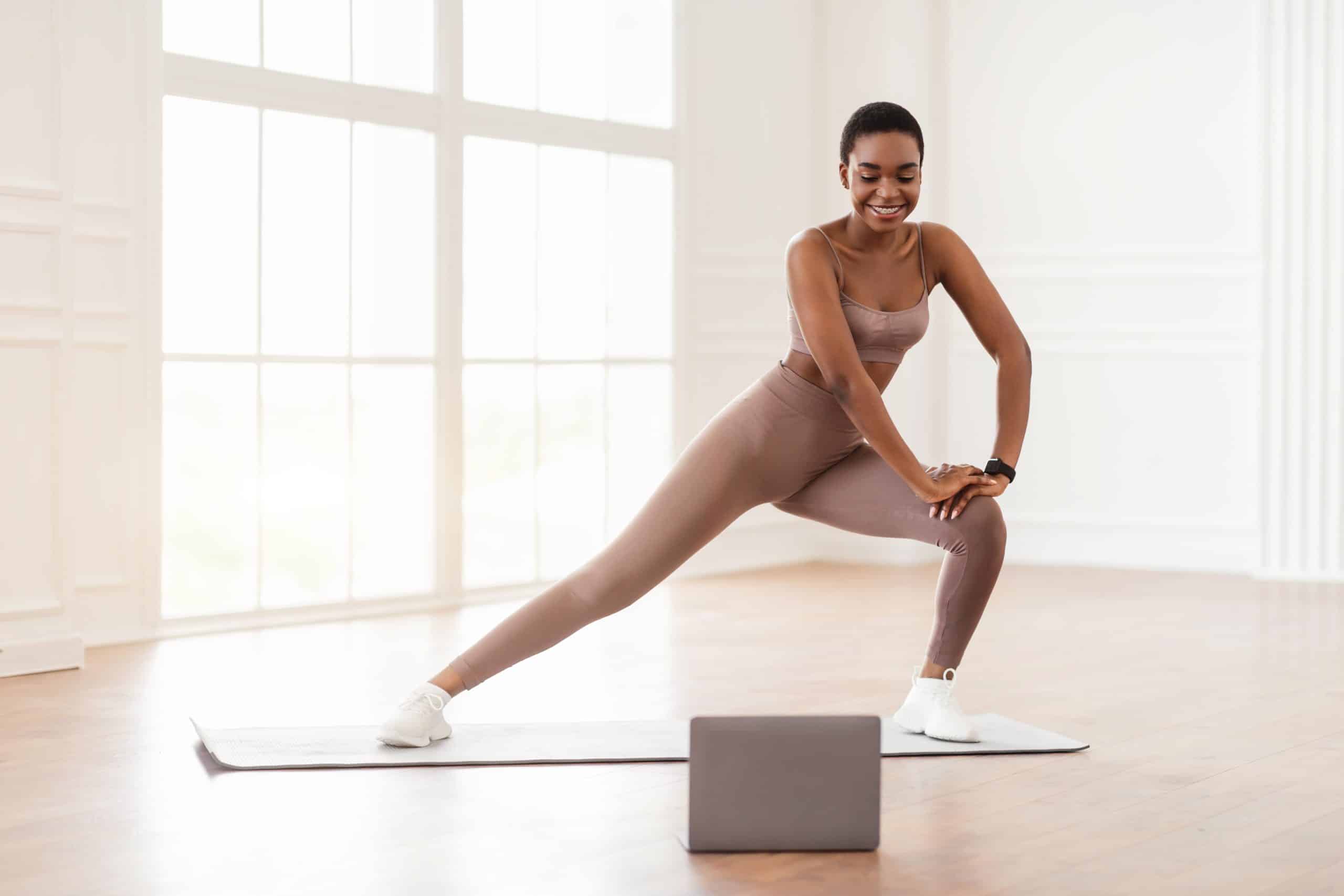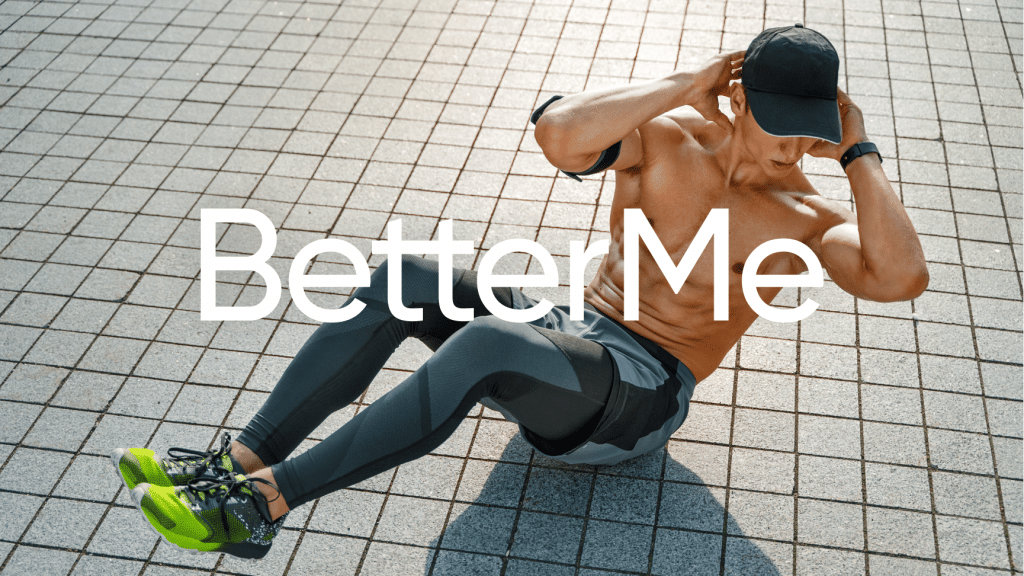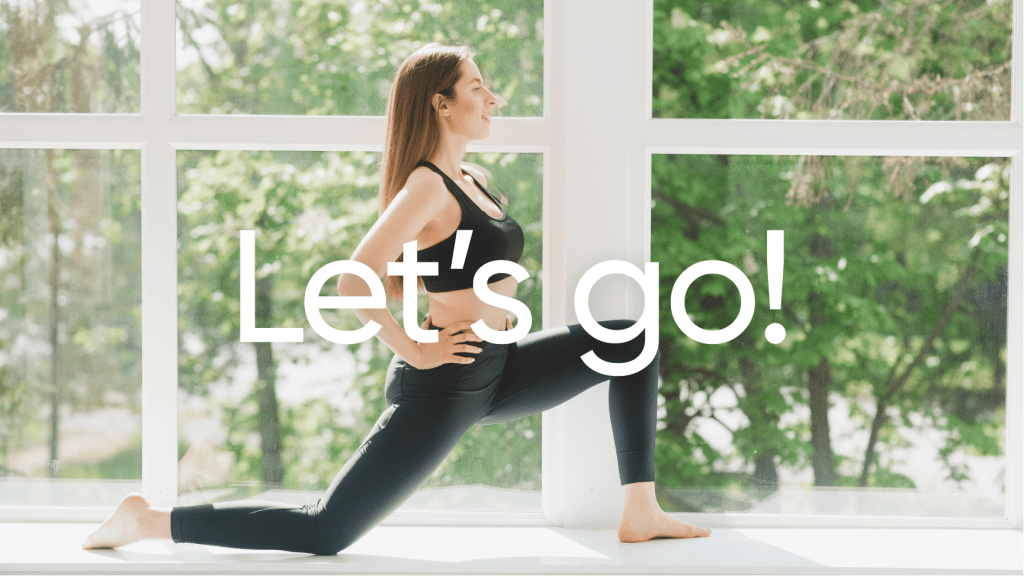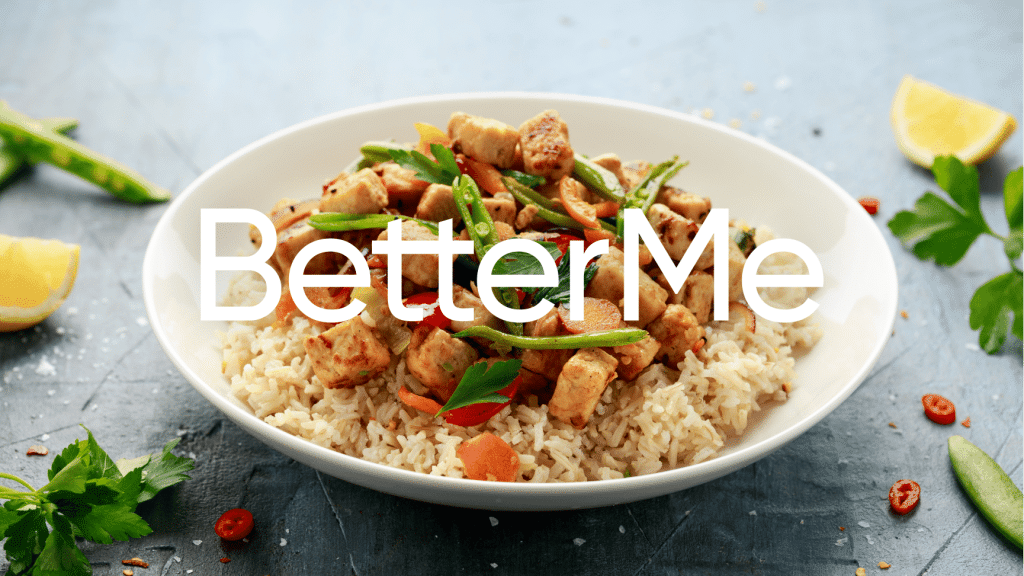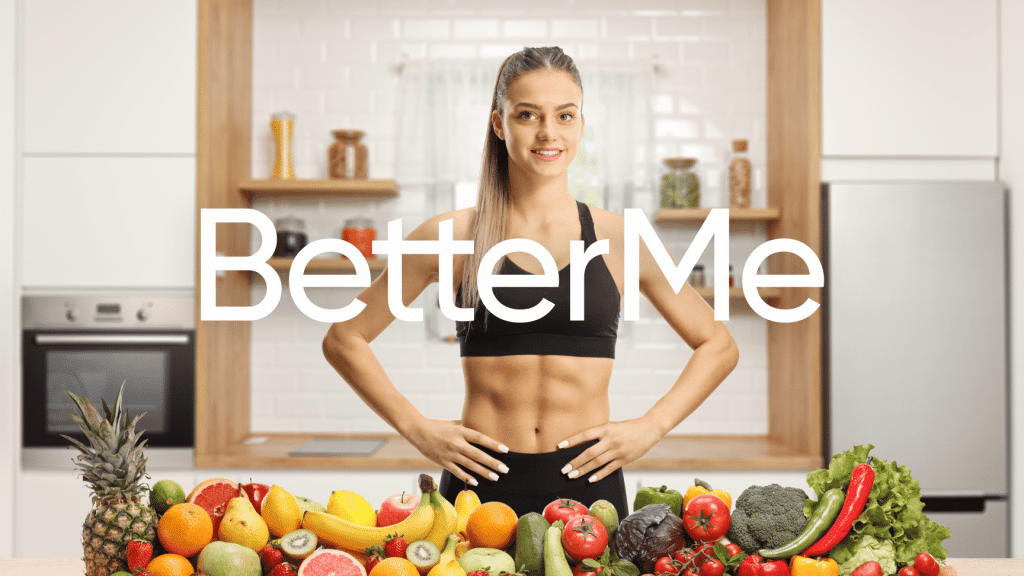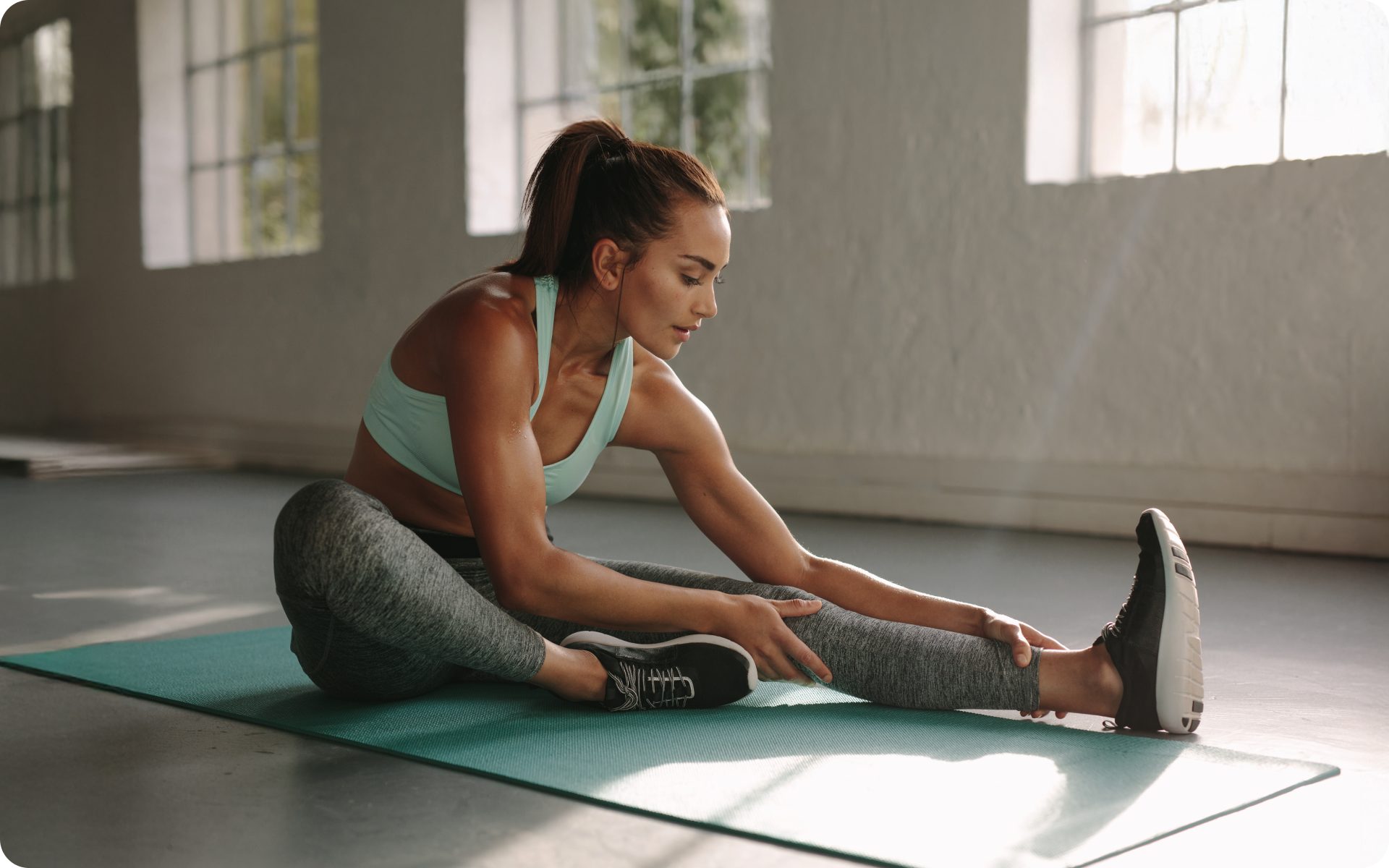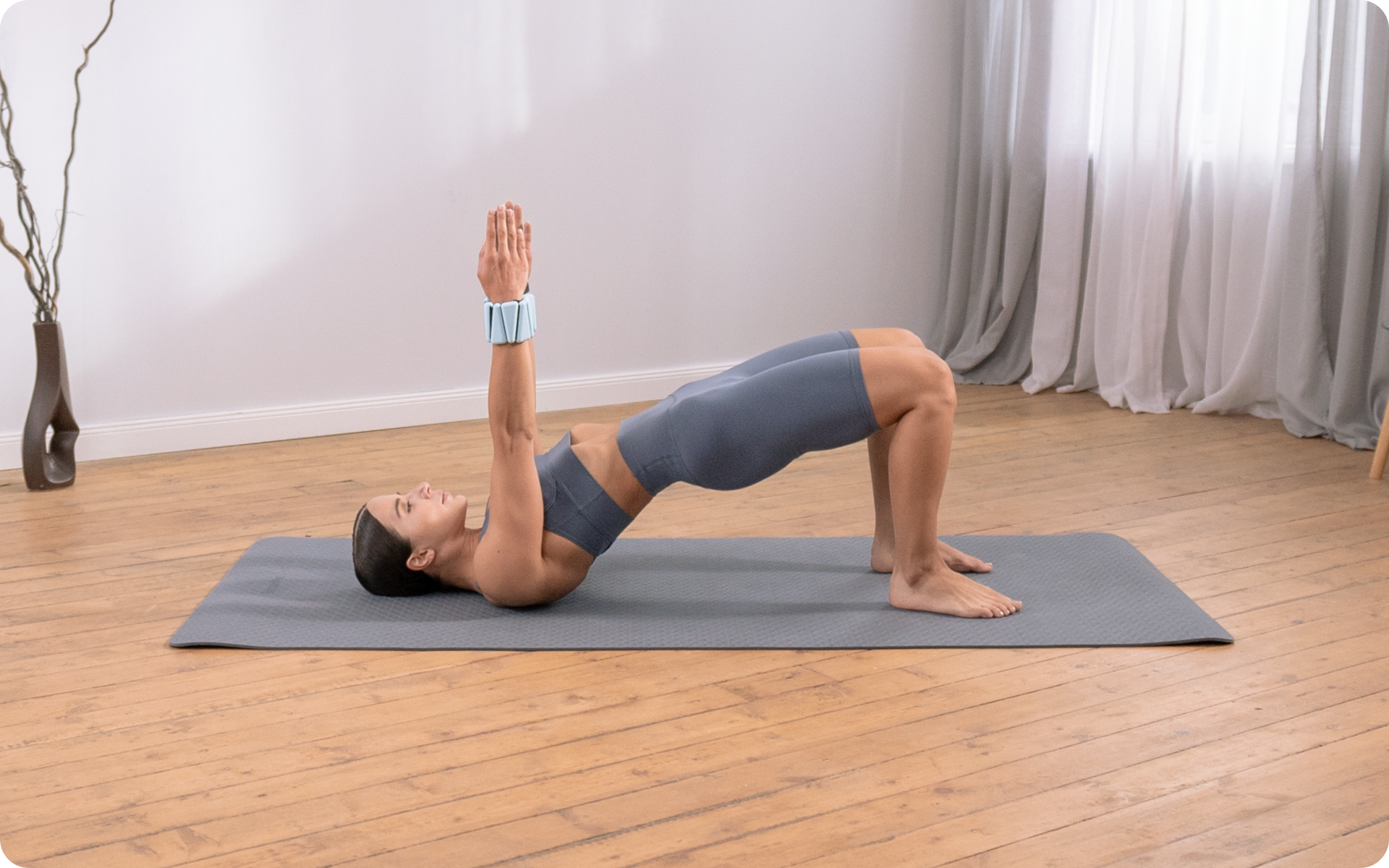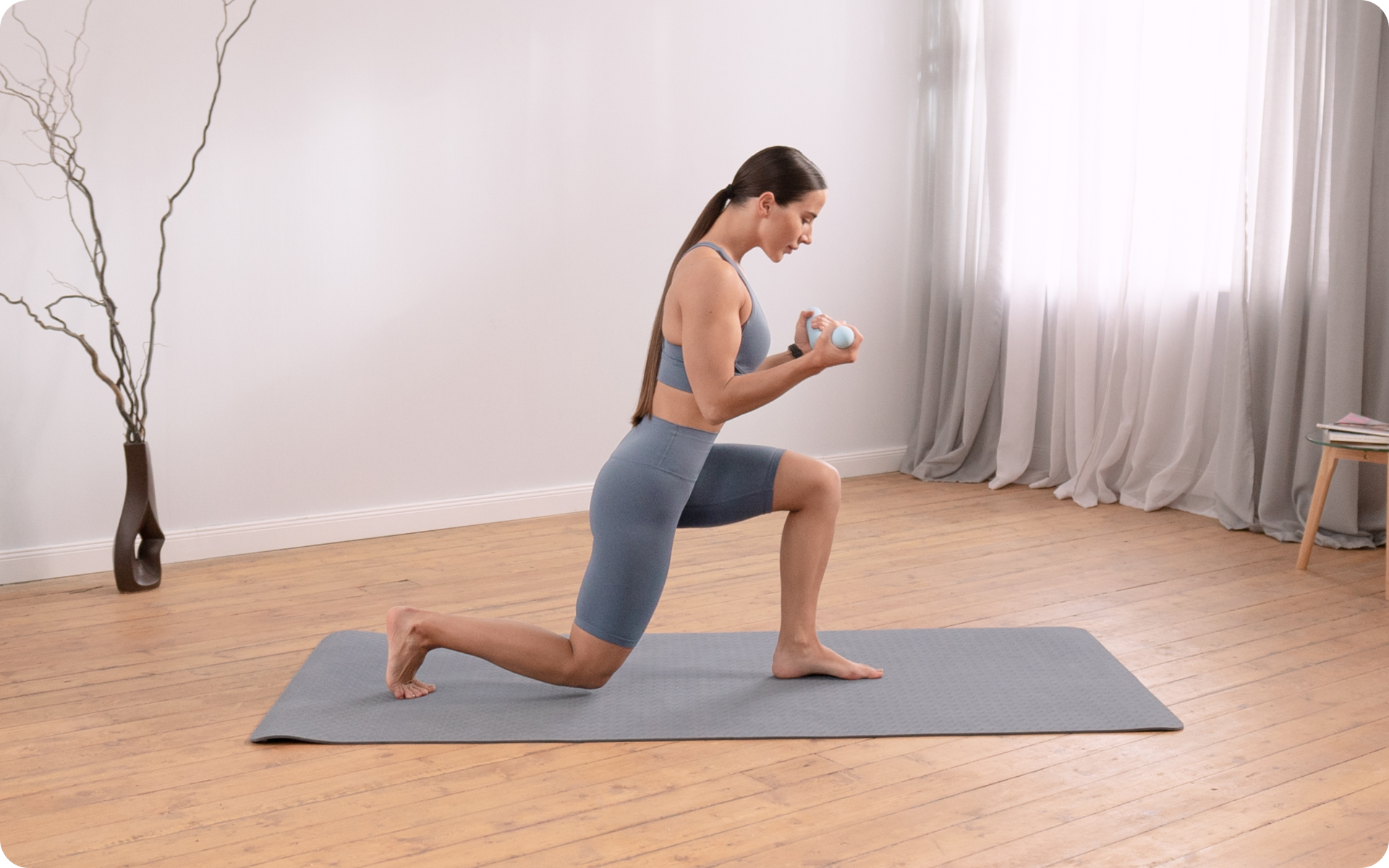The hamstrings and glutes are powerhouse muscles that play a crucial role in everyday activities like walking, running, and climbing stairs, as well as in sports performance and injury prevention (2). Strengthening your hamstrings and glutes not only helps improve your overall fitness, but also enhances stability, reduces lower back pain, and helps you achieve that perfectly sculpted posterior. In this article, we’ll dive deep into the most effective exercises that target these essential muscles, helping you to make the most of your workout routine and zero in on your fitness goals. We’ll also provide tips for each and every exercise.
What Are The Best Exercises For Glutes And Hamstrings?
The best exercise that works both the glutes and hamstrings are the high-intensity compound exercises. These types of movements involve multiple joints and muscle groups, allowing for more efficient progressions and strengthening of the body.
Here is a list of the 7 best exercises for glutes and hamstrings.
1. Barbell Hip Thrust
The barbell hip thrust is a powerful exercise that targets the glutes and hamstrings, with an emphasis on the gluteus maximus.
This movement involves hip extension while your upper back is supported on a bench, allowing for greater glute activation, compared to traditional exercises like squats or lunges.
Steps to execute the Barbell Hip Thrust:
- Position a bench or sturdy platform behind you and sit on the ground with your back against the edge of the bench.
- Roll a loaded barbell over your thighs until it’s positioned across your hips. You may use a pad or folded towel for added comfort.
- Plant your feet firmly on the ground, hip-width apart, with your knees bent at a 90-degree angle.
- Brace your core and drive through your heels to lift your hips off the ground, extending them fully at the top of the movement.
- Squeeze your glutes at the top, then slowly lower your hips back to the starting position.
- Repeat for the desired number of repetitions.
2. Romanian Deadlift (RDL)
The Romanian Deadlift is a hinge movement that primarily targets the hamstrings and glutes while also engaging the lower back and core muscles.
This exercise emphasizes the eccentric (lengthening) phase of the hamstrings, which can lead to improved muscle growth and flexibility.
Steps to execute the Romanian Deadlift:
- Stand with your feet hip-width apart, holding a barbell or dumbbells in front of your thighs with an overhand grip.
- Hinge at your hips, pushing them back while maintaining a slight bend in your knees and a neutral spine.
- Lower the weight toward the ground, keeping it close to your legs, until you feel a stretch in your hamstrings or your torso is parallel to the floor.
- Engage your glutes and hamstrings to reverse the movement, returning to a standing position.
- Repeat for the desired number of repetitions.
Read More: Gear Up For A Perky Bum: A Complete Guide To Doing Squats For Glutes
3. Bulgarian Split Squat
The Bulgarian Split Squat is a unilateral lower body exercise that targets the glutes, hamstrings, and quadriceps while also improving balance and stability.
By elevating the rear leg on a bench or platform, this exercise places greater emphasis on the front leg’s glutes and hamstrings.
Steps to execute the Bulgarian Split Squat:
- Stand facing away from a bench or sturdy platform, holding dumbbells at your sides or a barbell across your upper back.
- Place one foot behind you on the bench, with the top of your foot resting on the surface.
- Keep your front foot planted firmly on the ground, positioned far enough forward to maintain proper alignment during the movement.
- Lower your body by bending your front knee until your thigh is parallel to the ground, keeping your torso upright and your knee tracking over your toes.
- Drive through your front heel to return to the starting position.
- Complete the desired number of repetitions on one leg before switching to the other leg.
4. Glute Bridge
The glute bridge is an isolation exercise that primarily targets the gluteus maximus, with secondary engagement of the hamstrings and core muscles. This movement is ideal for activating and strengthening the glutes without placing significant stress on the lower back.
Steps to execute the Glute Bridge:
- Lie on your back with your knees bent, feet flat on the floor, and hip-width apart.
- Place your arms at your sides, palms down.
- Brace your core and drive through your heels to lift your hips off the ground, fully extending them at the top of the movement.
- Squeeze your glutes at the top, then slowly lower your hips back to the starting position.
- Repeat for the desired number of repetitions.
5. Lying Leg Curl
The lying leg curl is an isolation exercise that specifically targets the hamstring muscles. It requires a leg curl machine, which allows you to perform knee flexion against resistance.
Steps to execute the Lying Leg Curl:
- Adjust the leg curl machine so that the pad rests comfortably just above your ankles wn lying face down.
- Lie face down on the machine, positioning your knees just off the edge of the bench.
- Grasp the handles for stability and maintain a neutral spine throughout the movement.
- Flex your knees, curling your heels toward your glutes against the resistance.
- Slowly extend your knees to return to the starting position, maintaining control throughout the movement.
- Repeat for the desired number of repetitions.
Whether you’re a workout beast or just a beginner making your first foray into the world of fitness and dieting – BetterMe has a lot to offer to both newbies and experts! Install the app and experience the versatility first-hand!
6. Seated Leg Curl
The seated leg curl is another isolation exercise that targets the hamstrings using a leg curl machine. In this variation, you perform knee flexion against resistance while seated upright.
Steps to execute the Seated Leg Curl:
- Adjust the seated leg curl machine so that the pad rests comfortably just above your ankles when seated.
- Sit in the machine with your back against the support pad, positioning your knees in line with the machine’s pivot point.
- Grasp the handles for stability and maintain an upright posture throughout the movement.
- Flex your knees, curling your heels toward your glutes against the resistance.
- Slowly extend your knees to return to the starting position, maintaining control throughout the movement.
- Repeat for the desired number of repetitions.
7. Sumo Deadlift
The sumo deadlift is a variation of the traditional deadlift that places greater emphasis on the glutes and hamstrings, due to its wider stance and more upright torso position. This exercise also engages the lower back, core, and upper back muscles.
Steps to execute the Sumo Deadlift:
- Stand with your feet wider than shoulder-width apart, toes pointing slightly outward.
- Bend at your hips and knees to lower your body toward the ground, grasping a barbell with an overhand or mixed grip.
- Be sure your back is straight, chest lifted, and shoulders positioned directly above the barbell.
- Drive through your heels, extending your hips and knees to lift the barbell off the ground.
- Fully extend your hips and knees at the top of the movement, then reverse the motion to lower the barbell back to the ground.
- Repeat for the desired number of repetitions.
How Do You Build Glutes And Hamstrings?
Building strong and well-defined glutes and hamstrings requires a combination of effective exercises, proper nutrition, and adequate rest. By incorporating the right principles and movements into your workout routine you can maximize muscle growth in these areas.
Let’s take a deep dive into what it takes to build muscle in your glutes and hamstrings.
Principle 1: Progressive Overload
To stimulate muscle growth, you must consistently challenge your muscles by gradually increasing the load or intensity of your workouts. This principle, known as progressive overload, ensures that your muscles are continually adapting to new stimuli, leading to increased strength and size (10).
Some ways to apply progressive overload include:
- Increasing the weight lifted
- Increasing the number of repetitions or sets
- Decreasing rest time between sets
- Varying exercise tempo (e.g., slowing down the eccentric phase)
Read More: Get A Toned Butt With Effective Glute Isolation Exercises
Principle 2: Exercise Selection
Choose compound exercises that target multiple muscle groups simultaneously, as they offer the most bang for your buck when it comes to building muscle. Some essential movements for glute and hamstring development include:
- Squats (e.g., back squats, front squats, goblet squats)
- Deadlifts (e.g., conventional deadlifts, sumo deadlifts, Romanian deadlifts)
- Hip thrusts or glute bridges
- Lunges (e.g., forward lunges, reverse lunges, walking lunges)
- Leg curls (e.g., lying leg curls, seated leg curls, Swiss ball leg curls)
- Step-ups
Principle 3: Training Frequency And Volume
Aim to train your glutes and hamstrings at least twice per week, allowing for adequate recovery time between sessions.
Research suggests that a higher training frequency may lead to better muscle growth, especially for beginners (7). In terms of volume, aim for 3-5 sets of 8-12 repetitions per exercise, as this range has been shown to be effective for hypertrophy (muscle growth).
Principle 4: Mind-Muscle Connection
Focusing on the mind-muscle connection during your workouts can help improve muscle activation and lead to greater gains (8). As you perform each exercise, concentrate on contracting the target muscle(s) and maintaining proper form.
Principle 5: Nutrition And Recovery
Optimizing your nutrition and recovery strategies is crucial for maximizing muscle growth and overall performance (6). Let’s dive deeper into the essential components of nutrition and recovery to help you build stronger glutes and hamstrings.
Dropping pounds by the dozens without putting yourself through the wringer is everyone’s weight loss pipe dream. But what if we told you that the BetterMe app can make that happen? Keep yourself in prime shape with our fat-blasting workouts, delicious budget-sparing recipes, and body-transforming challenges with our app!
Macronutrient Balance And Supplements
Protein
Protein is the building block of muscles and plays a vital role in muscle repair and growth (5).
Aim for 1.6-2.2 grams of protein per kilogram of body weight daily, spread across multiple meals. High-quality protein sources include lean meats, fish, dairy products, eggs, legumes, and plant-based protein powders.
Carbohydrates
Carbohydrates provide the energy needed for intense workouts and replenish glycogen stores in your muscles (11). Opt for complex carbohydrates like whole grains, fruits, vegetables, and legumes, which release energy slowly and steadily.
Aim for 3-6 grams of carbohydrates per kilogram of body weight daily, depending on your activity level.
Fats
Healthy fats are essential for hormone production, nutrient absorption, and overall health (1). Include sources of unsaturated fats such as avocados, nuts, seeds, and olive oil in your diet. Aim for 0.8-1.0 grams of fat per kilogram of body weight daily.
Creatine
This popular supplement has been shown to increase muscle strength, power, and size (4). Consider supplementing with 3-5 grams of creatine monohydrate daily to enhance your glute and hamstring development.
Branched-Chain Amino Acids (BCAAs)
BCAAs, particularly leucine, play a vital role in muscle protein synthesis (3). While most people can obtain enough BCAAs through their diet, supplementation may be beneficial for those with limited protein intake or during periods of intense training.
Hydration
Staying well-hydrated is crucial for optimal muscle function and recovery (9).
Aim to drink at least 8-10 cups of water daily, and increase your intake during periods of intense exercise or hot weather. Monitor your urine color as a gauge for hydration; a pale yellow color indicates proper hydration.
Sleep And Rest
Adequate sleep is essential for muscle recovery, growth hormone production, and overall health (12). Aim for 7-9 hours of quality sleep per night, establish a consistent sleep schedule, and create a relaxing bedtime routine to improve sleep quality.
Should You Do Glutes Or Hamstrings First?
There isn’t a definitive answer on whether you should work the glutes or hamstrings first, as the optimal order depends on your individual goals, strengths, and weaknesses. Here are some factors to consider when determining the exercise order:
1. Prioritize Weaknesses
If one muscle group is significantly weaker or less developed than the other, consider starting with exercises targeting that area to address imbalances and reduce the risk of injury.
2. Focus On Goals
If your primary goal is to increase glute size or strength, begin with glute-focused exercises when your energy levels are highest. Conversely, if hamstring development is your main objective, start with hamstring exercises.
3. Pre-Activation Techniques
Some individuals may benefit from pre-activation exercises to improve muscle engagement during compound movements.
For example, performing glute activation exercises (e.g., banded clamshells, glute bridges) before squats or deadlifts can help ensure proper glute involvement and prevent excessive hamstring compensation.
4. Fatigue Management
Consider the impact of exercise order on fatigue and performance. For instance, if you perform heavy hamstring curls before squats, your hamstrings may be too fatigued to provide adequate stability during the squat, potentially compromising form and increasing the risk of injury.
Can You Train Glutes And Hamstrings Together?
Yes, you can train glutes and hamstrings together, and it is often an effective approach for several reasons. These two muscle groups share similar functions and are involved in many compound lower body exercises.
Training them together can lead to a more efficient and balanced workout routine. Here are some points to consider when training glutes and hamstrings together:
Synergy In Movements
Glutes and hamstrings work synergistically in various movements, such as hip extension and stabilization of the pelvis during squats, lunges, and deadlifts.
By training them together, you can perform compound exercises that target both muscle groups simultaneously, leading to a more efficient workout.
Time Efficiency
Combining glute and hamstring exercises in a single workout allows you to maximize your time in the gym. You can perform multi-joint exercises that engage both muscle groups, reducing the overall number of exercises needed and potentially shortening your workout duration.
Balanced Development
Training glutes and hamstrings together promotes balanced muscular development and reduces the risk of muscle imbalances or compensations.
Focusing on both muscle groups ensures that you don’t neglect one area in favor of the other, which can help prevent injuries and improve overall performance
When designing a workout that targets both glutes and hamstrings, keep the following factors in mind:
1. Exercise Selection
Choose a combination of compound and isolation exercises to effectively target both muscle groups.
Compound exercises like squats, deadlifts, and lunges engage both glutes and hamstrings, while isolation exercises like glute bridges, hip thrusts, and leg curls can help you focus on specific muscles.
2. Exercise Order
Prioritize your weaker muscle group or the one that aligns with your main goal. If your primary objective is glute growth, start with glute-focused exercises, followed by hamstring exercises. Conversely, if hamstring development is your main focus, begin with hamstring exercises.
3. Training Volume And Frequency
Aim for a total of 3-5 sets of 8-12 repetitions per exercise to promote muscle hypertrophy. Train your glutes and hamstrings at least twice per week, allowing for an adequate recovery time between sessions.
4. Mind-Muscle Connection
Focus on the mind-muscle connection during each exercise to improve muscle activation and get the proper engagement of the targeted muscles.
5. Progressive Overload
Gradually increase the load or intensity of your workouts over time to stimulate muscle growth and avoid plateaus.
Conclusion
Incorporating a variety of effective exercises targeting the glutes and hamstrings is crucial for balanced muscle development, improved athletic performance, and reduced risk of injury.
By combining compound and isolation movements, focusing on progressive overload, and considering individual goals and weaknesses, you can create a well-rounded and efficient lower body workout routine.
Remember to prioritize proper form, maintain a strong mind-muscle connection, and support your training with adequate nutrition and recovery.
DISCLAIMER:
This article is intended for general informational purposes only and does not serve to address individual circumstances. It is not a substitute for professional advice or help and should not be relied on for making any kind of decision-making. Any action taken as a direct or indirect result of the information in this article is entirely at your own risk and is your sole responsibility.
BetterMe, its content staff, and its medical advisors accept no responsibility for inaccuracies, errors, misstatements, inconsistencies, or omissions and specifically disclaim any liability, loss or risk, personal, professional or otherwise, which may be incurred as a consequence, directly or indirectly, of the use and/or application of any content.
You should always seek the advice of your physician or other qualified health provider with any questions you may have regarding a medical condition or your specific situation. Never disregard professional medical advice or delay seeking it because of BetterMe content. If you suspect or think you may have a medical emergency, call your doctor.
SOURCES:
- A healthy approach to dietary fats: understanding the science and taking action to reduce consumer confusion (2017, biomedcentral.com)
- Anatomy, Bony Pelvis and Lower Limb, Hamstring Muscle (2022, ncbi.nlm.nih.gov)
- Assessment of Branched-Chain Amino Acid Status and Potential for Biomarkers (2006, sciencedirect.com)
- Creatine supplementation with specific view to exercise/sports performance: an update (2012, ncbi.nlm.nih.gov)
- Dietary Protein and Muscle Mass: Translating Science to Application and Health Benefit (2019, mdpi.com)
- Editorial: Nutritional Strategies to Promote Muscle Mass and Function Across the Health Span (2020, frontiersin.org)
- Higher Training Frequency Is Important for Gaining Muscular Strength Under Volume-Matched Training (2018, frontiersin.org)
- Importance of mind-muscle connection during progressive resistance training (2016, pubmed.ncbi.nlm.nih.gov)
- Practical Hydration Solutions for Sports (2021, mdpi.com)
- Progressive overload without progressing load? The effects of load or repetition progression on muscular adaptations (2022, ncbi.nlm.nih.gov)
- Regulation of Muscle Glycogen Repletion, Muscle Protein Synthesis and Repair Following Exercise (2004, ncbi.nlm.nih.gov)
- Sleep, recovery, and metaregulation: explaining the benefits of sleep (2015, ncbi.nlm.nih.gov)
